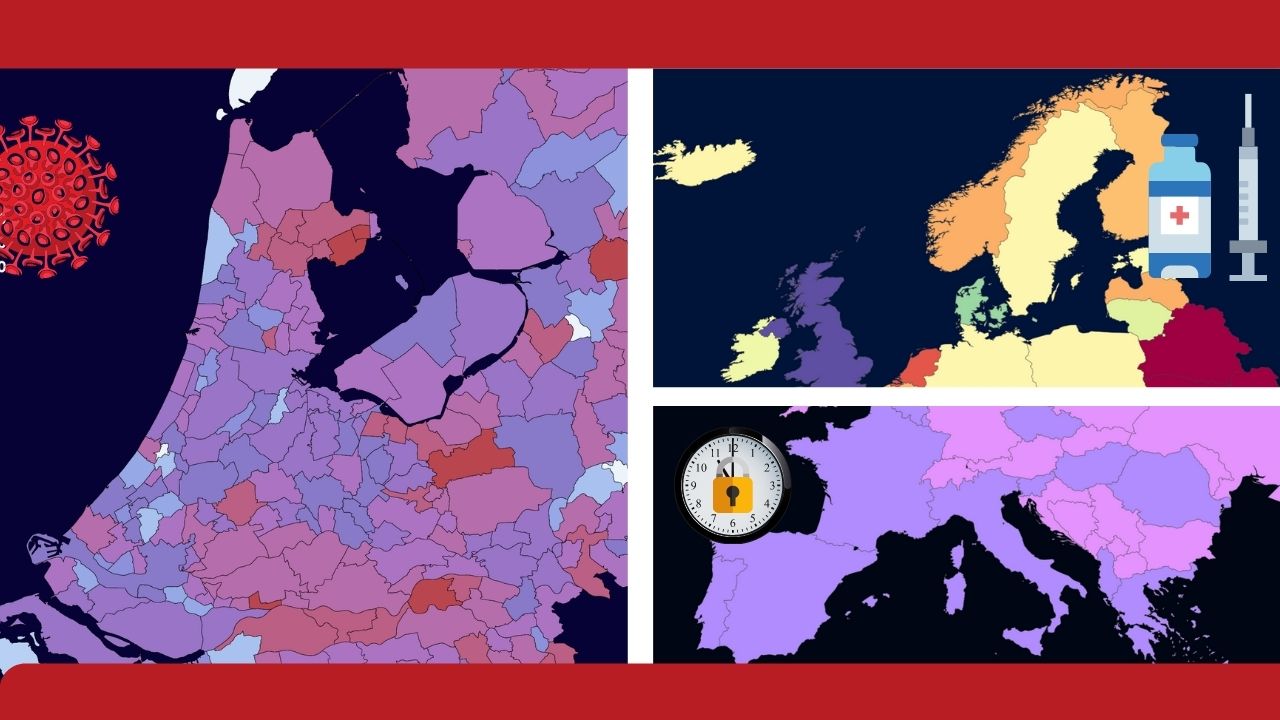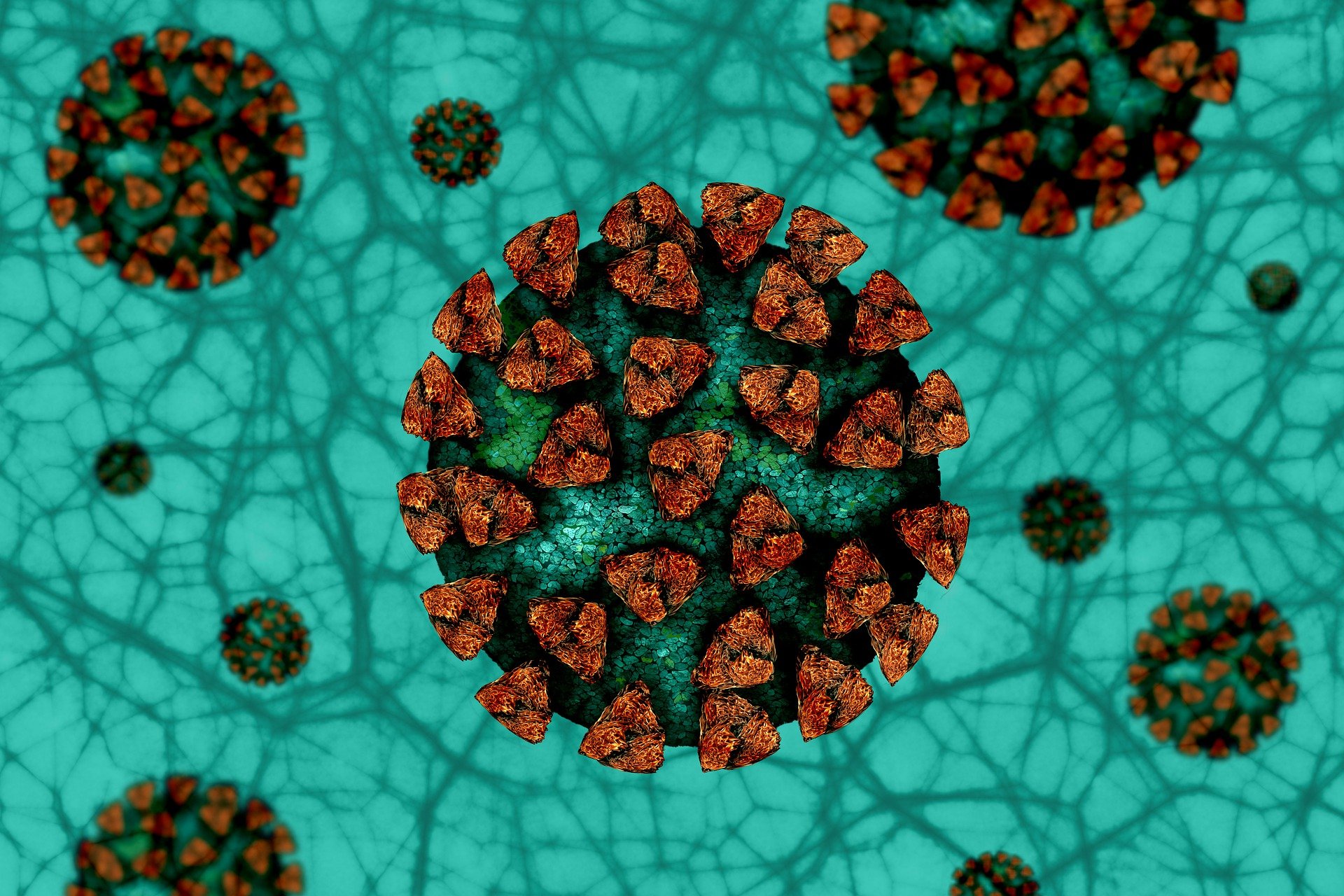
The newest phase of the corona pandemic exploded this month. On the one hand, the European continent fears the highly contagious variants from the United Kingdom, South Africa and Brazil, which has invariably led to a tightening of the rules. More and more countries are opting for curfews in an effort to stave off corona.
But on the other hand, with the launch of vaccination campaigns, a tentative glimmer of light is appearing at the end of this long, dark Covid tunnel. But because it will be months before enough immunity is built up through the vaccination programs and the more infectious variants, the rules of the viral game have changed once more.
Will a sweeping measure like a curfew be the key to success? European governments tend to have rather different views on that. The map below illustrates this disparity. Clicking on a country shows the details in terms of time frames and when the measure came into force.
Curfew as a big stick
Belgium, France, Slovenia and Spain were the first to introduce a ban on leaving the house at night after a certain time. In theory, a curfew should reduce the number of contacts where home visits are concerned. In the third week of January, implementation of this measure in Europe is about 50/50. The Netherlands recently introduced the measure and a corona curfew is also on the cards in Germany.
Does a curfew actually help against corona? At any rate, in France they are firmly convinced that it does. Over there, the curfew was extended by an additional two hours last weekend by bringing the starting time forward from 8 p.m. to 6 p.m. This measure, in combination with a restriction on visits and strict enforcement, was supposed to lead to an 8 to 13 percent drop in the reproduction rate. And amazingly: they did manage to do this without having to close down the schools.
Belgium, which was still the worst hotbed in Europe this fall, was the first EU country to introduce a curfew. Did this measure extinguish the intense autumnal flames of corona here as well? In all likelihood it did. But this is difficult to ascertain. At the same time, the government also enacted the closure of schools, non-essential stores (which have since reopened) and a very strict enforcement of the measures. For example, some violators of the corona rules even ended up in jail. This combination of measures led to Belgium having the lowest levels of corona in Western Europe by early 2021.
Coronaviruses and public holidays
Spain and the Czech Republic, two countries that have had curfews in place since last fall, relaxed them during the public holidays. Portugal and Ireland, where the reins were loosened a bit during Christmas, also fell prey to a rather ferocious January surge. Whether this was due to holidays being overly congenial, or to a dominant mutant strain having flown in from across the Irish Sea or Atlantic Ocean? A combination most likely.
Unlike the Portuguese, the Irish seem to have managed to get the situation under control again fairly quickly over the past week. They do not have a curfew in place but introduced rather drastic travel restrictions instead that prohibits residents from going more than 5 kilometers outside of their homes without an ‘essential reason’. As for Finland, none of this seems to be necessary. They have succeeded in keeping the number of infections at a very low level since the beginning without the need for draconian measures.
Does a curfew really work against corona? In all probability it does, but so do things like strict enforcement, compliance with basic rules, travel restrictions, and school closures. Like a lockdown, it is also a measure that results from too lax of an approach during an earlier stage. Moreover, the holidays proved that easing up too quickly or taking a temporary breather can wreck months of low levels of corona infections.
The much-feared apocalyptic January peak has so far not quite materialized in the Netherlands. At least not when compared to other countries. Nevertheless, the virus is still rampant. The situation is considerably more alarming in the east than in the Randstad (the middle of The Netherlands, the main commercial hub). This was the other way around last summer. Municipalities in West Brabant and the Rotterdam region are colored noticeably light on the corona map from January 13 to 19 this year.

How is the Netherlands doing?
Corona maps usually show the number of infections per 100,000 inhabitants. This figure was chosen last year at the outset of the pandemic when there were still relatively few reported cases. On this new map, this principle has been reversed to reflect a more concrete figure. It shows that in the past week, 1 in 113 residents of the town of Staphorst was found to have a corona infection. On the island of Texel, this was 1 in 1,505.
It seems that the measures taken last month are beginning to bear fruit. The ICUs are still very busy, but Code Black seems to have been averted for now. The infection numbers are also showing a slight decline. Although other countries’ rates are dropping much faster, there doesn’t seem to be a New Year’s wave here like there was in Portugal, Ireland or Spain. However, the threat of the British variant on the other side of the North Sea is still lurking. This explains the introduction of stricter measures.
While the Netherlands does not stand out very much in terms of infections and measures, things are completely different when it comes to that other crucial prevention strategy. Out of all the EU Member States, only Bulgaria is vaccinating more slowly than the Netherlands. Will we be able to catch up now that we are out of the starting blocks? No. That backlog continues to mount over time as January progresses. This can be clearly seen on the inoculation chart below. Click the blocks underneath to reveal the percentages of the previous four weeks.
Too late and too slow
With an inoculation rate that is hovering at a meagre 0.45%, the Netherlands is almost 2.5 percentage points behind EU frontrunner Denmark this week. The rest of the continental pack ranks around 1.5 percent. The NHS in the United Kingdom has been the quickest to start inoculating. Here, by Tuesday, January 19, seven injections had been administered among every 100 residents. This is in stark contrast to the Netherlands, where last month’s false start seems to have been swapped for a first phase at a snail’s pace.
On a global level, millions are also being vaccinated. Israel, where they have the ‘luxury’ of an enormous force of reservists and a hyper-modern army, has already vaccinated almost a third of their total population at least once. Trailing at a great distance are countries such as the United Arab Emirates, Bahrain and the United States. The rest of the top ten is filled with European countries. Countries such as Slovenia and Lithuania prove that a high GNP is not always necessary for a rapid start.

Back to normal?
Is it now starting to be noticed in Israel that so many Israelis have already been vaccinated against the virus? Yes and no. Not one but two vaccinations are necessary for optimal protection. Although people are less susceptible after the first jab and tend to develop less severe symptoms, this does not mean that the number of infections immediately drops down to zero. Moreover, 69% of the population is still not vaccinated at all. Those who think that the vaccination champion is almost corona-free at this point are being deceived. An exceptionally vicious Covid wave is rampaging across the country this January.
Which is hardly surprising. An estimated vaccination rate of at least 60 percent of the population is required for an adequate level of herd immunity. Also, the lion’s share of Israelis still have to have a second vaccination appointment scheduled. But if they manage to keep this pace up at this unprecedented rate, their pandemic woes could be over by March. Provided the microscopic mutants from Brazil, South Africa or some other country don’t throw a spanner in the works.
Previous articles in the Corona in Europa series:
January 5: False start for the Netherlands at the European Pfizer Vaccination Championship
November 24: Second wave heads east
October 19: How the Swedish fairy tale crashed long before Christmas
October 12: Corona in Europe: How 5 viral lines of defense prevent a lockdown
October 5: What went wrong in the Czech Republic and Israel?
September 28: How the Netherlands got entangled in a chaotic communication web
September 22: Europe braces itself for a corona autumn
September 14: Corona in Europe: How to interpret the autumn peak of the pandemic
August 31: Why do Finland and Spain differ like day and night?







